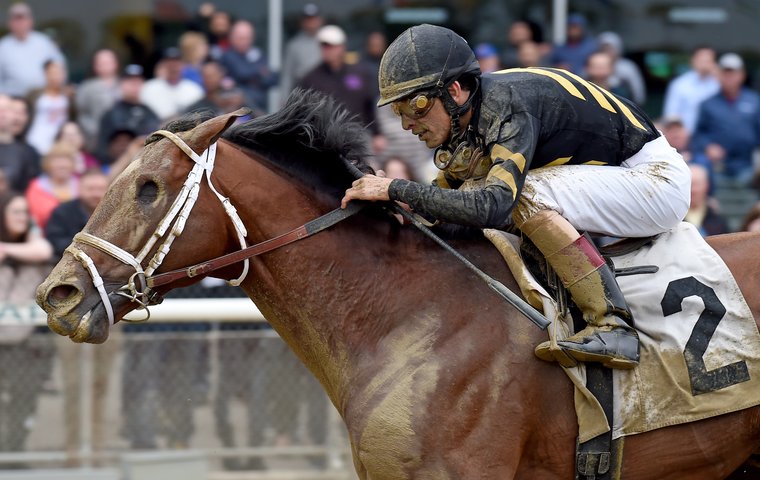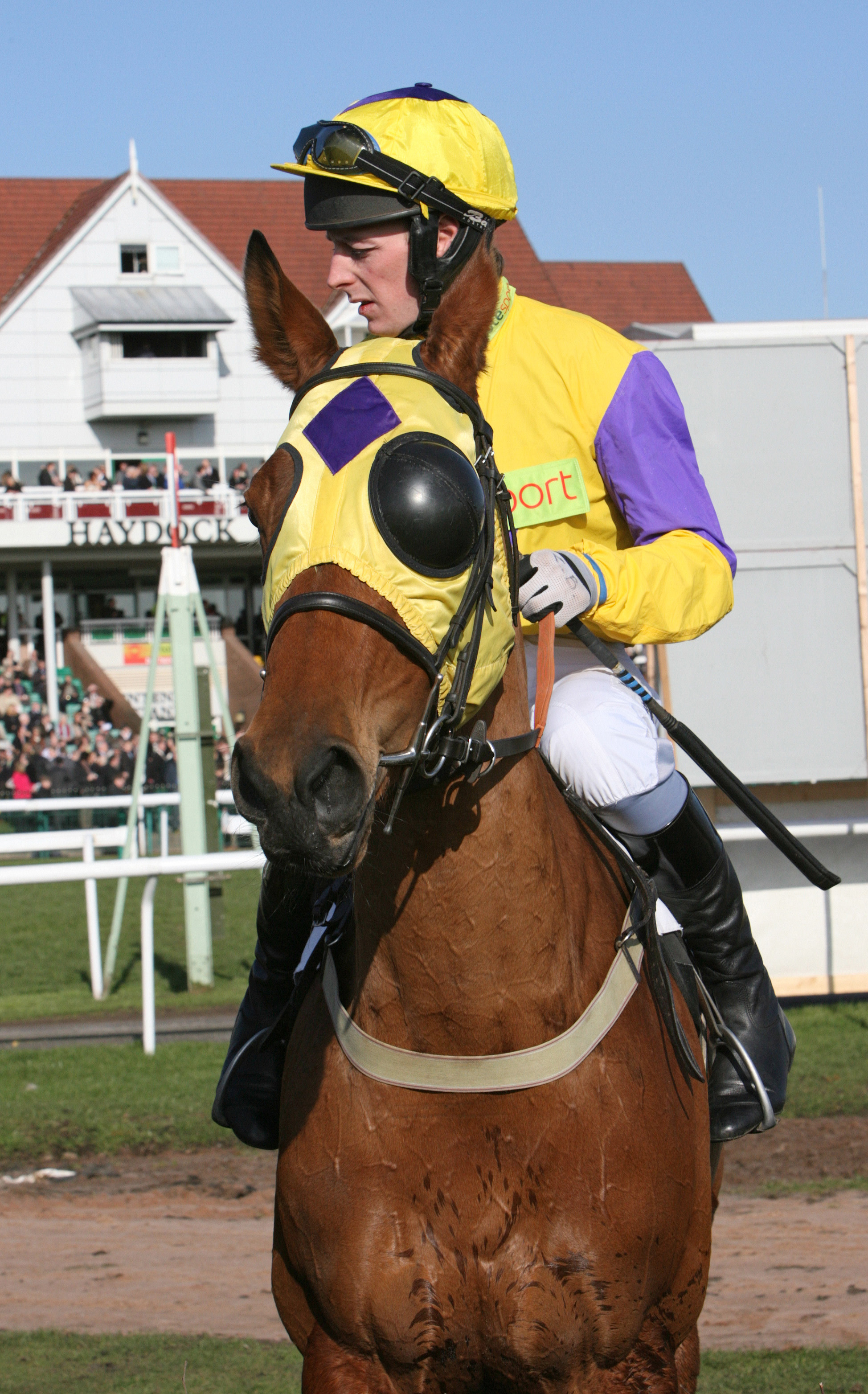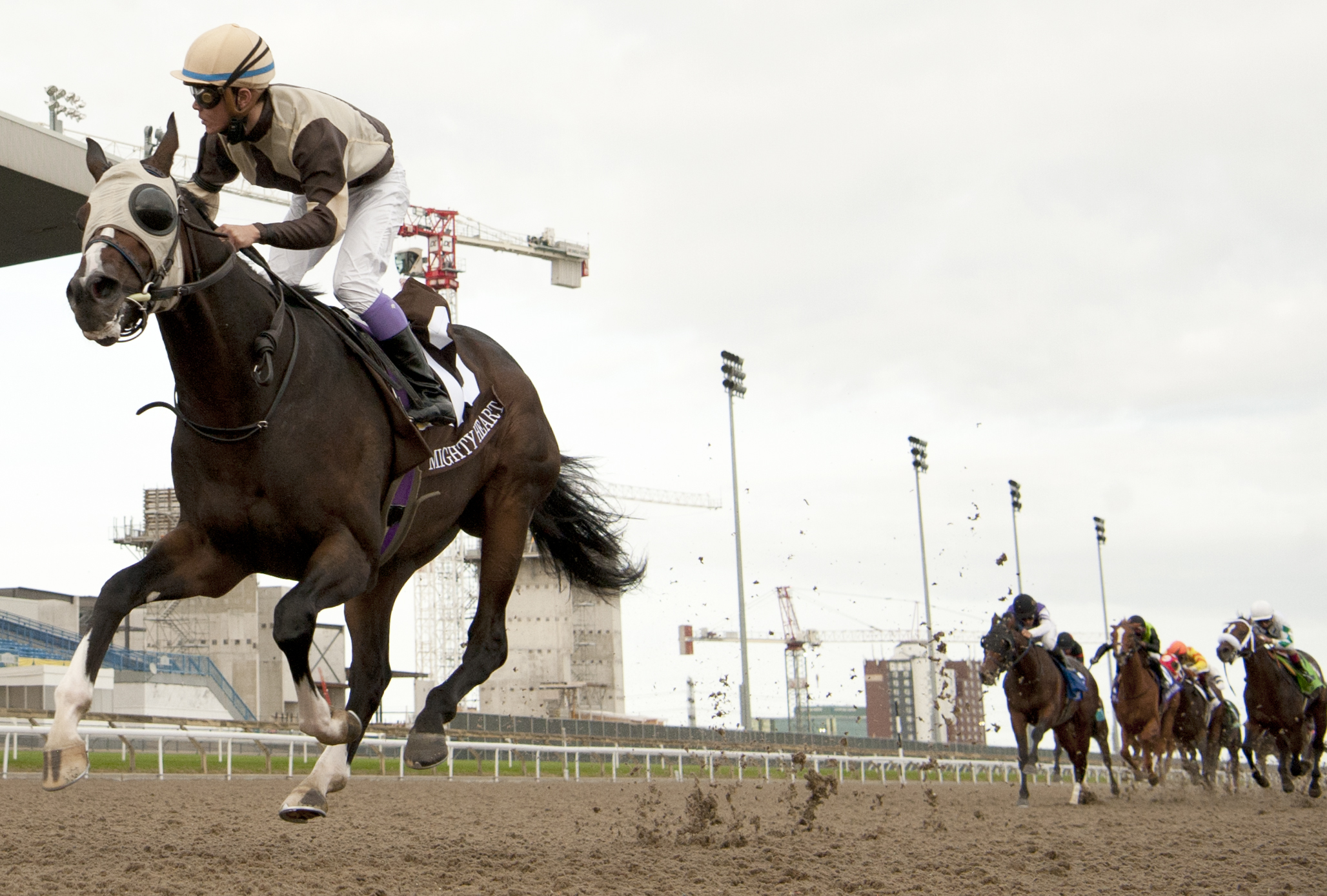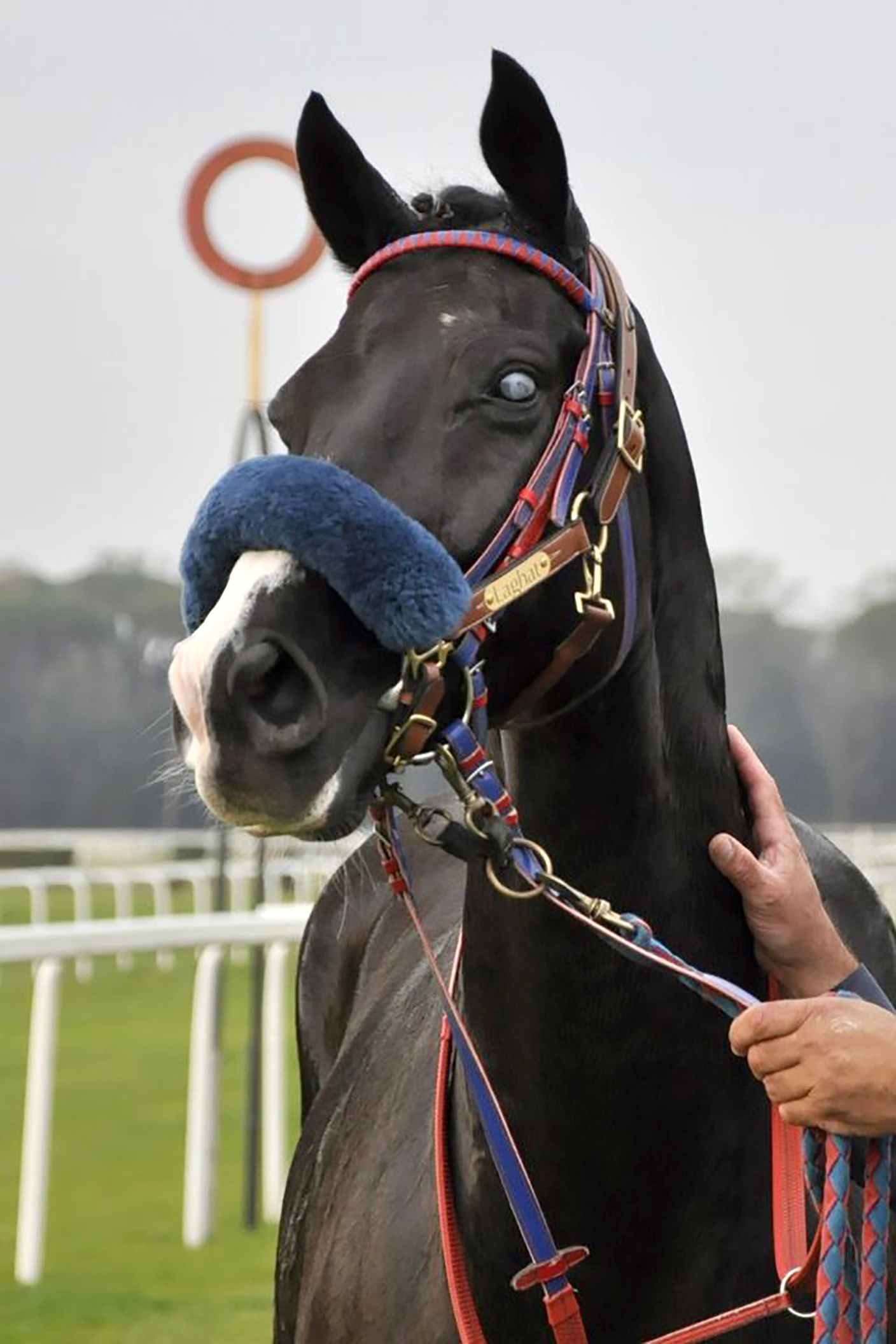
Material World was such a kindly soul that she used to share wisps of her hay with her neighbour. She charmed everyone, including the author Jilly Cooper, who included her generous gesture in her novel ‘Jumpers’.
 Alongside her remarkable temperament, Material World also stood out as a horse with huge potential. Suzy Smith, then a fledgling trainer in southern England, says of the then (in 2002) unraced 4-year-old, “It was my first season. I was only 25. I had thrown everything into it, and all the money I had on her. I knew she was my best horse, though I didn’t know how good she was going to be.”
Alongside her remarkable temperament, Material World also stood out as a horse with huge potential. Suzy Smith, then a fledgling trainer in southern England, says of the then (in 2002) unraced 4-year-old, “It was my first season. I was only 25. I had thrown everything into it, and all the money I had on her. I knew she was my best horse, though I didn’t know how good she was going to be.”
So it was a terrible blow when, startled by a trespasser on the gallops, she came down, causing a fungal infection in her left eye that vets and Newmarket specialists could not heal. Kept in a dark box, on drips, she was clearly uncomfortable. “I felt desperately sad and sorry for her,” Smith remembers.
And finally the decision was made to remove the eye.
Material World spent a month in a paddock acclimatising with great equanimity to her new world vision, as the staff adjusted by being solicitous and always warning her when they were approaching her, before resuming her training.
It went well, to put it mildly. She won her first race - a National Hunt flat contest at Market Rasen in April 2003 - by ten lengths, stormed to victory in her second at Hereford a month later, romped home over hurdles at Folkestone, was only twice out of the first three in nine more races before winning again at Wincanton, then was runner-up in a big race at Aintree before claiming first place in the Pertemps Handicap Hurdle qualifier at Cheltenham in December 2006.
She then finished a half-length second in the final at the Cheltenham Festival itself in 2007.
“She was so tough. I couldn’t believe how well she adapted,” says Smith. “She’d go through gaps, barge others out of the way. She was always in the thick of it, and only occasionally intimidated when she was broadsided on her blind side.”
Her gung-ho spirit and adaptability puts her in good company.

The Canadian dual classic winner
Canada’s Mighty Heart was named after a kitten that his owner Larry Cordes’ girlfriend fed with an eye-dropper when it was rejected by its mother. He lost his left eye in an accident at just 2 weeks old.
He recovered, but he took a while to find his feet. His trainer, Josie Carroll, cautioned patience when he finished well out of contention in his early races. He endeared himself to all, not least his groom, Siobhan Brown, who told reporters that, as she is epileptic, “I totally get, you know, not being all there, so we just kind of bonded from that and it’s been really nice … He just needs some love. He’s one of those horses that needs time.”
The reward for biding his time? He has been Canada’s outstanding horse this year, following victory in the Queen’s Plate at Woodbine in Toronto, the first leg of the country’s Triple Crown (in the second fastest time since 1957) by winning the second leg, the Prince of Wales Stakes at nearby Fort Erie.
Mighty Heart was unplaced in the third leg, the Breeders’ Stakes back at Woodbine, but he remains a ferocious competitor. Carroll has said that, while he’s happy to saunter when he’s alone on the gallops, when he shares the space with another - they.shall.not.pass.
The horse who was third in the Belmont Stakes
Patch - an inelegant name for such a spectacular creature - was well into training as a 2-year-old in the U.S. when a mysterious ailment resulted in him also losing an eye.
Trainer Todd Pletcher knew - or thought he knew - that horses adapt better if they lose an eye very young as “it’s all they know”, and that, if it happens later, they need more time to come to terms with it. So he sent Patch to his trainer father, JJ Pletcher. Patch had other ideas, and made it clear he didn’t appreciate the kid-glove treatment, so after a few weeks, JJ called Todd to tell him that all the horse needed was to get back to training.
Todd told reporters, “The remarkable thing about him is we really haven’t had to do anything special.”
Patch resumed his career as a 3-year-old in 2017, opening up with a second and then a first in Maiden Special Weight races at Gulfstream, then finishing runner-up in the G2 Louisiana Derby before running in two Triple Crown races - the Kentucky Derby (he finished 14th) and the Belmont Stakes (he was third). He has since retired.
Virtually blind in BOTH eyes - but he won 26 times
 Italian Federico De Paola would recognise Mighty Heart’s competitive streak as the owner, breeder and jockey of Laghat. The horse contracted a fungal infection, mycosis, as a yearling and treatment, including box rest with blacked-out windows for three months, had no effect. Laghat was rendered entirely blind in one eye and 95 percent blind in the other, giving his eyes a milky appearance.
Italian Federico De Paola would recognise Mighty Heart’s competitive streak as the owner, breeder and jockey of Laghat. The horse contracted a fungal infection, mycosis, as a yearling and treatment, including box rest with blacked-out windows for three months, had no effect. Laghat was rendered entirely blind in one eye and 95 percent blind in the other, giving his eyes a milky appearance.
De Paola was so devoted to him, the trust between the two so intimate, he once said that they spoke their own language.
Though he originally took Laghat racing for nothing more than exercise, the horse took to it immediately with a winning debut at San Rossore Racetrack in Pisa. He clocked up 26 wins, 30 places and well over €100,000 in prize money in a career that lasted from 2006 to 2015.
De Paola told reporters, “He has a sixth sense which tells him where to put his legs.”
Laghat never once collided with others, even in large fields of 16, and “when we get close to the finishing life, he is the one who gives me the signal, and goes faster”.
He also knew when he’d crossed the line first. When he won, he’d be happy and playful in his box. When he lost, he’d nip and kick his long-suffering stable companion.
He has now retired and, with a Fjord horse for company, he roams his pasture and greets his near-daily fans.
As Josie Carroll told reporters of Mighty Heart, “There’s something in racing we call heart, and horses with heart are what you’re looking for, more so sometimes than horses with talent.”
This article appears in the latest issue of Gallop magazine.


